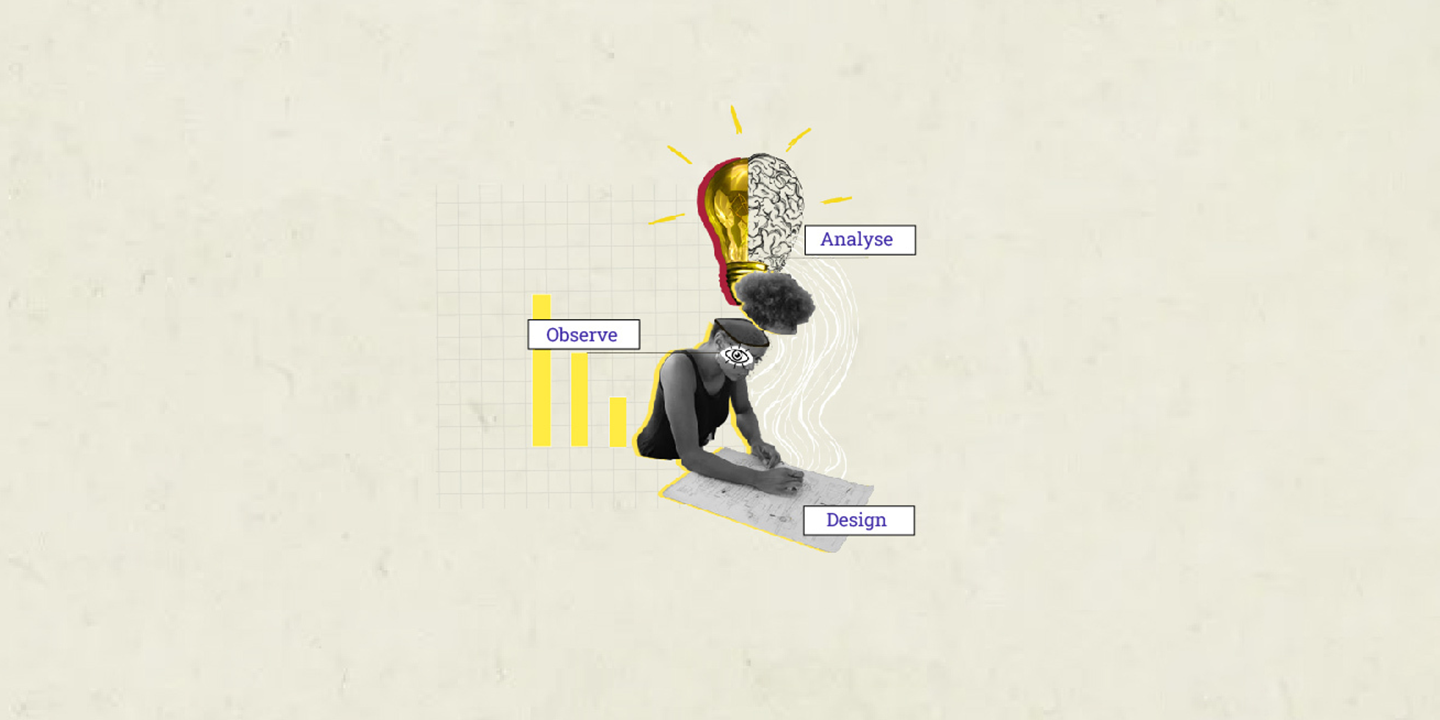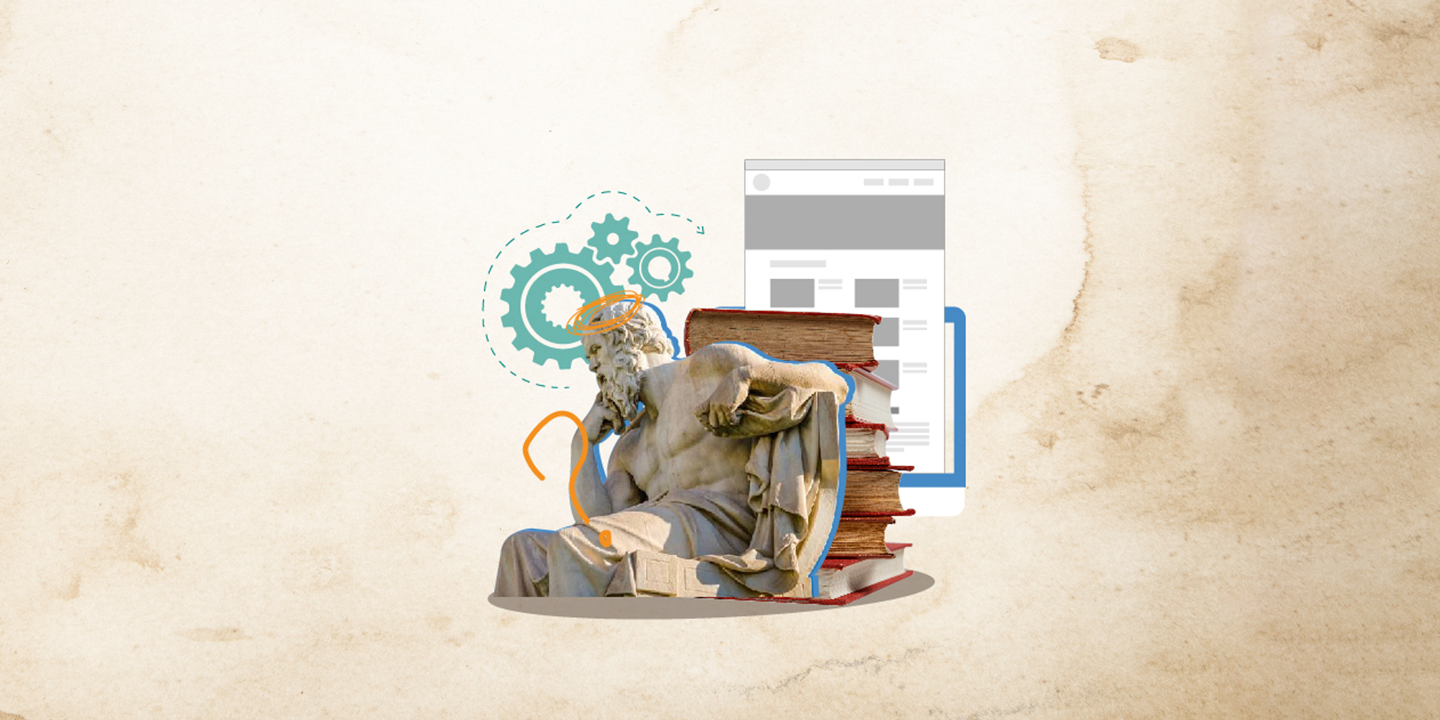General store UX: Understanding human behaviour
Palak Jadhav
01 Dec 2025

I like to ride down to my aunt and uncle’s place every weekend. They have been running a general store for nearly 20 years near their house. The population there is dense and varied - filled with many many different personas.
It must be the very reason why I like to spend my weekend at their shop, running it (trying), and observing both the keepers and the customers. I like to observe people and give myself a hard reminder that “you are not your users.” Different people think differently. Someone’s challenge might not even be your need!
The Shop
It is a cozy general store situated in a densely populated area. There’s a school in front of the shop. The neighboring shops include a tea stall, an istriwala (ironing service), a utensil seller, a beauty parlor, and a small temple with a beautiful Tagar (pinwheelflower) tree in front of it.
The hustle bustle means the shop gets an average of 20 customers per hour.
It sells everything you need in your house as a daily need. Soaps, shampoo sachets, cartoon-themed chip packets, milk, cold drinks, chocolates, pulses, eggs, and many other things that won’t have an English name!
The Customers
This is where it gets interesting for me.
The customer profiles change with the time of the day, week, and events like festivals.
Early in the morning, the loyal customers stop by and don’t even have to say a word. They just have to stand, exchange a smile and a Namaskar (hello), take the milk, eggs, etc., and leave. They don't even have to say what brand of milk or how many eggs they want, or sometimes even pay, as they have their monthly accounts in the books. Call it personalization!
These are the people who would inquire about me, as I am the rare face on the counter. This category helps me locate the items when they ask for something and I struggle cluelessly around the shop to find it. They already know the geography of the shop and can exactly point out how to navigate! Call it familiarity.
The afternoon is school time. The kids make the shop super busy by hustling and bustling at the counter with their giggles. They are low-ticket customers but take a lot of time at the counter, unlike the pro customers in the morning. These are rather confused and change their decisions over the yellow vs. orange candy at least 3 times. They need some help to make a decision and even tear chip packets from the counter.
The evening is for, ahem ahem, the party people. Mostly male, looking for chilled water bottles or soda (as per their preference :P) and some munchies. Or sometimes, clueless teenagers who have been sent to get masala but don’t know how much or which. They always end up calling their parents to confirm.
The Learning
1. Real people are beyond personas on a sheet
My time at the shop gives me a peek into the “also-a-tier 1-city” persona.
On paper, I live in the same city as the customers. But both our personas have a vast difference.
For instance, I do almost all of my payments online. Whereas the customers that visit the shop, prefer to pay in cash. Hardly 8-10 people use online payment.
There's also a lot of difference in the quantities that get purchased. For example, I would buy something in a 500-gram packet just so I don't have to visit a shop again and again - my intent is to let that thing last me for a month. However, at the shop, people prefer to go for the smallest packets possible, which you wouldn't even know exist. I got to know that there is a soap bar worth ₹5!
There are brands that are consumed that I have never heard of. People also tend to transact in credits, which means that they may give money at the beginning of the month when they have it with them, but they still keep on transacting in the shop for their needs. There’s a relationship of trust between the shopkeeper and the customer because of which they allow credit. The tone and language in which my uncle speak with people is very polite and friendly. Partly because they have all belonged to the same community for the last 25 years.
2. KYC: Know Your Customer
We saw earlier that the customer profiles change according to the time of day. My uncle keeps appropriate items handy so that he can quickly reach out to them during that time. If there are fasts coming up, then accordingly, the food items are ordered from the suppliers.
For example, if Raksha Bandhan is coming up, then people generally tend to make some sweet milk, and a day before, my uncle already orders more milk from the supplier.
3. Build relations with the regulars
As we observed with the customers in the morning. It shouldn't even be necessary to ask the users what they want. The idea is that you should be able to understand and deliver based on their previous behaviour. Intuitive experience.
4. Tone matters a lot
People like my uncle because he is soft-spoken. They prefer walking a few feet further to come to his shop rather than go to the others. The essential message here is to put the users at the centre of your design.
5. Present rightly
Don’t make them think!
As you can see in the picture below, in the layout of the shop, a part of the countertop has a low height, and the kids hang around here and can comfortably look at the luring mini fridge of chocolates and candies and make a wishlist with their parents!
All the pulses and spices are on the right, where all the kitchen category people can focus and locate things; these are mostly women of the houses.
The munchies come out in the evening and hang right in the face waiting for its appropriate audience.
 An evening at the store!
An evening at the store!
6. Commitment and values
My uncle and aunt have run the shop for the last 25 years.
They teach an important life lesson: show up each day, consistently, and love your work.
They don't have a manager or a penalty for coming in late. They have been consistently opening their shop at 4 in the morning each day. Even Sunday.
They are dependable for their users.
7. Strong operations
The shop has 3 operators, including my uncle and aunt (and sometime me!), and they all dance to the same rhythm. They hand over the shop to each other at different intervals of time. The coordination has to be harmonious, as it is not a laptop that you can close off and go away while the next one comes. It's a shop that you can't shut down or leave alone! The 3 people have been doing this smoothly, even before phones were a thing!
8. Make allies
The neighboring general stores are good friends. They all help each other with change and even shortages of supplies. There is competition, of course.
But there’s a community too. Community over competition is the way around here.
Realization is a good teacher.
I learn the importance of authentic empathy regularly. Whenever it is feasible, in my projects, I try to walk down to the users’ places, follow them, and observe them during their errands.
It might be difficult to convince business stakeholders and even prove the ROI directly. But when designers get themselves exposed to the true nature of users like this, the information architecture and the user journeys are the first things to get improved. Authentic.
And ultimately, the UX, as a whole.







